A Beginner’s Guide to Medicine for Family and Friends of a Medical Student
Updated 12/15/23
Do you have a family member or friend in medical school that you can no longer understand? When your loved one in medical school is speaking with their classmates, do you find yourself thinking, “What in the world are they talking about?! No seriously — what language is this?!?”
Not to fear!
With the help of my medical school class, I’ve put together a glossary of 25 of the most common terms you’ll hear medical students say and what it all means. Although it is long, this list is by no means comprehensive and is reflective only of my individual experiences as a medical student here at the University of Michigan. Regardless, I hope that this glossary is helpful for family, friends, future medical students (and current medical students) alike!
Although no one asked, I’d like to share a few quick pieces of advice before I begin. It is no secret that medical school is tough. However, I had no sense of the ways in which it would be until I started three years ago. For me personally, the hardest part of medical school has not actually been school — not the 30-hour calls, not the never-ending exams, not the fatigue from early mornings or the emotional weight of taking care of sick and dying patients. For me, the hardest part of medical school has been comparing myself to the people around me. As undergraduate students, many of us were the best at everything. Because it is so competitive to get into medical school, we had to be. This quickly shifts when entering medical school, and it’s easy to lose perspective when the world seems to be fully contained within the hospital walls. This shift is challenging and often disappointing, especially when it seems as though the people around you are succeeding effortlessly (spoiler: they’re not). For parents, friends, and family reading this who are not in medicine, the best I advice I can give is to be patient with your loved ones. Be a good listener. Remind the person of their strengths and know that you may never fully understand what they are going through. It is impossible to do it all (trust me I still try), and the available free time students have with a friend or family member in medical school will change and evolve. As a medical student, what that has helped me feel balanced is keeping in mind my strengths, widening my perspective by participating in a small number of activities outside of medicine, and keeping in touch with friends both in and out of medical school. And it also helps that I’m at an institution I love with people I love, too!
All right, now that that’s over with — Let’s get to it!
___________________________
1. Premed: Before applying to and matriculating into medical school, medical students are required to complete an undergraduate degree. During their undergraduate studies, these students are often referred to as premed or premedical students. To apply to medical school, there are a certain number of core competencies that need to be met. Students do not need to major in the sciences; they only need to fulfill the premedical competency requirements that vary by medical school. Students will also need to complete the MCAT, the medical school entrance exam. The American Medical College Application Service (AMCAS) opens in May, one year before a student would matriculate, and it’s best to apply as early as possible. After interviewing, applicants to Michigan are admitted on a rolling basis from October through February, and accepted applicants will select their medical school by April 30th, the national date. Most medical schools then begin in July or August. At this point, students are no longer premedical students but rather plain old medical students. Finally!
I would also like to note that many current medical students were not premedical students during their undergraduate years and chose to pursue other fields (engineering, business, military, education, the arts, and more) after graduating. Students who later decide that medicine is their passion will often go back to school to complete coursework, study for the MCAT, and then apply.
2. White Coat Ceremony: The White Coat Ceremony marks the beginning of medical school. Students are presented and cloaked by the medical school administration with short white coats that they will wear throughout medical school. Did you know that you can tell how far along someone is in their training based on how long their white coat is? Medical students have short white coats that go to their waist. Residents wear longer white coats and attending physicians wear even longer white coats. Love that medical hierarchy!
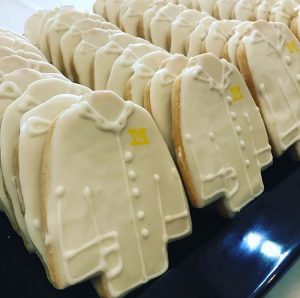 via Instagram | @umichmedschool
via Instagram | @umichmedschool
3. M1, M2, M3, and M4: These titles are a shorthand way of understanding what year in medical school a student is. An M1 is a first-year medical student, an M2 is a second-year medical student, and so on. Dental students use similar terminology, so a first-year dental student is called a D1. Law students switched it up a little, so a first-year law students is called a 1L instead of an L1.
4. MSTP: MSTP stands for Medical Scientist Training Program. This refers to medical students who are in school to receive both their MD and PhD. These students will often complete the first two years of medical school with their matriculated medical school class, leave to complete their PhDs, and then return to complete the last two years of medical school before continuing on to residency. These students do not pay tuition and also receive a stipend! In total, MSTP students take about seven to nine years to complete both degrees.
5. Blocks: In most medical schools, the first one to two years of school are spent building a foundation of medical knowledge in the classroom and anatomy labs. Most medical students spend about two years in this portion however Michigan, along with many other medical schools, transitioned to a condensed medical foundation curriculum that lasts approximately 12 months. At Michigan, we build this knowledge by going through six blocks that include three Foundations of Medicine blocks with courses focused on molecular/biological sciences, evidence-based care, host defense, physical diagnostics and therapeutics, infection, hematology and immunopathology, and three Vital Function blocks with courses focused on normal and abnormal vital functions. At Michigan, we also have pass/fail quizzes and exams built into each block to make sure students are successfully building their foundation of medical knowledge and are ready for the next steps of medical school. Some medical schools are not pass/fail, and students are graded during this portion.
6. Core rotations: Also known as “the wards” or “core clerkships.” After spending one to two years in the classroom setting, medical students are now ready to continue their training in the hospital and clinics. This initially happens by rotating through a set number of required core rotations. These are pretty standard for all medical schools with some variation. At Michigan, our core rotations are completed during our second year (with one exception: emergency medicine, which is completed during the third or fourth year). At other medical schools, students may rotate through required clerkships during the third year. Our core rotations at Michigan are internal medicine (IM), pediatrics, surgery, family medicine, obstetrics and gynecology (OBGYN), psychiatry, neurology, and emergency medicine (EM). Rotation length varies from about one month for the shortest rotations to three months for the longer rotations, and this is school dependent. At the end of each of the core rotations, students are required to take an exam called a shelf exam that covers the clinical material of that field. You heard that right folks: not only are students required to work in the hospital or clinic during the day, they also come home and study for the shelf exam that will be at the end of each of their required clerkships. Medical students will often say that their year of core rotations is the toughest year of medical school for this reason. After completing these core rotations, students can start to pick elective rotations. Thankfully there are no shelf exams at the end of elective rotations. You may hear medical students asking each other “What are you on right now?” This is a shorthand way of asking another medical student what rotation they are currently on. Students are split up and rotate in different specialties during different months, so not all medical students are together on the same rotation at the same time.
7. Switch weekend: The weekend in which a student switches from one rotation to another is often called a switch weekend. Because many of the rotations require students to work six days a week, a two-day switch weekend is often a treat.
 via Instagram | @umichmedschool
via Instagram | @umichmedschool
8. Rounding: Inpatient refers to the hospital setting. Outpatient refers to settings outside of the hospital, such as clinics. Most inpatient rotations (internal medicine, pediatrics, surgery) consist of rounding. Each morning, the entire team consisting of students, residents, the attending physician, and sometimes pharmacists, dietitians, or palliative care specialists will walk around together to check in on each patient. When they get to a patient room, the student or resident taking care of the patient will present information about the patient to the team (for example: What events happened to the patient in the past 24 hours since the team rounded yesterday? How is the patient feeling this morning?). The student or resident taking care of the patient will also present a plan that they think should be carried out for the day. The attending physician will then discuss the plan with the team and make changes as necessary. The team will go into the room and explain the plan to the patient and do a physical exam. The rest of the day is spent carrying out the plans that were discussed on rounds. In order to be prepared for rounds, students and residents will get to the hospital early to pre-round on patients. Different specialties round at different times in the morning. For example, surgical rounds are known for starting very early. If the surgical team is rounding at 6 AM, then a student might have to get to the hospital between 4:30 to 5 AM in order to pre-round!
9. On call and post call: These terms mean different things to different specialties. On call may mean that a person is present at the hospital for a set amount of hours. For example, in the ICU a student or resident may work a 30-hour call where they are physically present at the hospital for the entire time. If it is night time and there isn’t a whole lot going on, the medical student may be allowed to sleep for a few hours in the “call rooms.” Other times, being on call means the student or physician has to be a short distance from the hospital in case they are needed. The term post call refers to the day after someone’s call shift has ended. Let’s say that a medical student in the ICU has just finished a 30-hour call. The medical student got to the hospital Thursday at 6 AM and it is now Friday at 10 AM. For the rest of Friday, the medical student is post call, meaning they have this day off. Usually they will have the following day off as well. As I mentioned, these terms are tricky because they can mean different things depending on the specialty. It might be best to clarify what these terms mean in the context you hear them!
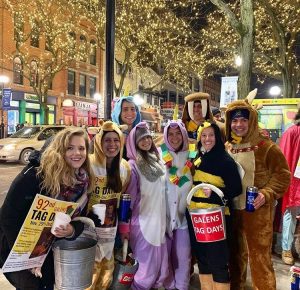 via Instagram | @umichmedschool
via Instagram | @umichmedschool
10. Evaluations: Students are evaluated on rotations by the residents and attending physicians with whom they work. Students receive formative and summative feedback. The formative feedback is for learning, including identifying strengths and areas for development. The summative feedback is an assessment of the students’ performance, and these are factored into the students’ overall grades. Students can view their evaluations and grades in a system called ARB.
11. Pass vs High Pass vs Honors: Students are given grades in their core rotations and elective rotations. These grades are important because they are part of the residency application. The grades for required core rotations are made up of clinical evaluations, shelf exams, and assignments. The grades for elective rotations are made up of evaluations alone because they do not have shelf exams. The grades available are Honors, High Pass, Pass, and Fail. Beginning in the 24-25 academic year, grades in the core rotations will be criterion based, meaning grades will be based on each students’ ability to achieve the learning objectives and competencies.
12. Boards: Board exams start in medical school. They are also the steps required to becoming licensed as a medical doctor! This includes Step 1 and Step 2.
Step 1, although a pass/fail exam, is arguably the most important exam in medical school for residency applications and can be a source of great anxiety. This eight-hour exam (yikes!!) covers medical knowledge that was learned in the preclinical year of medical school, along with clinical knowledge covered during core rotations. You will hear students talking about various study materials (such as Uworld, a bank of practice questions, or Sketchy, a fun series of animated cartoons that helps students learn and memorize) that they use to study. All of these resources, as well as signing up to take the board exams themselves, cost a lot of $$$. Medical schools will usually give students anywhere from one to two months of dedicated time to study, at the end of which students take the exam on the date they scheduled in advance. Many medical schools have their students take Step 1 between the M2 and M3 year although this varies among schools.
Step 2: The confusing thing about Step 2 is that there are two of them!
Step 2 CK stands for Step 2 Clinical Knowledge. While Step 1 focuses more on the academic foundation of science in medicine, Step 2 CK is a nine-hour exam that focuses more on real-world clinical questions. The questions on Step 2 CK are similar to the questions students have seen on shelf exams from their core rotations. Step 2 is graded 1-300 with a minimum passing score of 209 and a national mean in the 240s. Step 2 CK can be taken at any point in medical school. At Michigan, students generally take Step 2 as M3s within the first six months after taking Step 1.
The other Step 2 is called Step 2 CS. This stands for Step 2 Clinical Skills. This is an exam that tests clinical skills (physical exam, communication, and note writing skills) by having medical students perform these skills on actors called standardized patients. The exam is about eight hours and is pass/fail with about 96% of people passing. It is a requirement for residency applications and needs to be taken before December of the year in which a student applies to residency. This exam is only available in certain cities and fills up fast, so it is important to sign up and pay for this exam in advance.
13. Away rotations: Away rotations are a fun way to experience a new location and hospital system and are a good way to make connections at an institution in which a student would like to match for residency. These away rotations, often referred to as aways for short, are known as “auditions” because the medical student is auditioning for a spot in that program’s residency and wants to put forth their best effort. If a student wants to do an away rotation, they are required to apply and will choose where to complete the rotation depending on where they are accepted.
14. Sub-I: The term sub-I stands for sub-intern. An intern is a first-year resident. The term sub-I refers to a month-long rotation in which a medical student (usually an M3 or M4 who has completed core rotations and taken boards) practices being an intern on a general inpatient service. These rotations are hard due to long hours and increased responsibility but help prepare medical students to become interns in the future. At Michigan, we are required to complete two Sub-Is. Most students choose to do one ICU Sub-I and one general inpatient service Sub-I. Although we are treated like interns, we have residents that double check our work and sign our orders and notes.
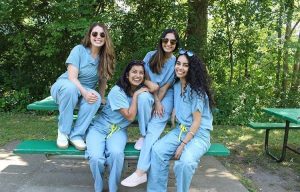 via personal Instagram with permission
via personal Instagram with permission
15. ERAS: ERAS stands for Electronic Residency Application Service. This is the service M4s use to apply to residency programs. To be able to practice medicine (prescribe medication and earn money as a practicing physician), medical students need to complete a residency program. There are some students who receive their M.D. and then choose to use it in other fields such as business or public health. If they do not complete a residency program, they are not able to practice medicine but still have valuable medical knowledge and skills that could be used in other ways. Fourth year medical students apply to residency in the fall of the year before they graduate. Just like for medical school, medical students fill out applications, write essays, and send scores and grades to a number of programs through ERAS. They are then invited to interview at certain programs.
16. Match Day: After completing all interviews, medical students will rank the programs at which they interviewed and submit a rank list. For example, if a medical student interviews at 12 programs, they will rank the programs 1-12 with #1 being their favorite program and so on. Residency programs will also create a rank list of all of the candidates they interviewed that season. Students submit their rank list toward the end of February and an algorithm matches the students’ rank lists with the residency programs’ rank lists. Medical students find out if they matched via email the third Monday in March and where they matched the third Friday in March at a Match Day ceremony. Fun fact: research on the Match Day algorithm was the basis for awarding the 2012 Nobel Prize in Economic Sciences. This is the same algorithm that sororities and fraternities use as well! Match Day is the day of the ceremony during which M4s receive their match results. Students receive an envelope that they open at a designated time. After opening the envelope, the student can see where they matched! It’s an exciting and emotional ceremony in which the student is joined by family, friends, and their graduating class to find out where they will be living and training for the next few years.
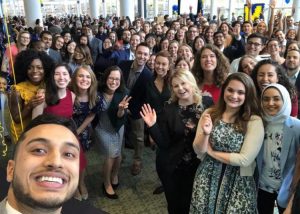
via Instagram | @umichmedschool
17. Couples match: The process of couples matching is pretty complicated and nuanced so let’s go through just the basics: Any two applicants matching the same year can link their rank list order to increase the chance of matching in a similar location. For example, a couple may put two schools both in Michigan as their #1 choice, two schools in Boston as their #2 choice, and so on. Each number is linked so that the couple will match at the highest choice in which both applicants match. The couple does not need to come from the same medical school to participate, but they do need to be matching the same year.
18. SOAP: Medical students find out if they match via email the third Monday in March of their graduating year. The third Friday in March is the Match Day ceremony in which students find out where they matched. Rarely, some students will find out on the Monday that they did not match. If a student does not match in the normal match process, they can choose to obtain a residency spot through the SOAP, the Supplemental Offer and Acceptance Program. This program starts the Monday on which they hear they do not match. At the beginning of the week, students receive of a list of unfilled programs in any field across the country. For example, if a student was hoping to match into a certain specialty did not match, the student has the option of looking at unfilled spots for ALL specialties, not just the one into which they were hoping to match. Students can then apply to up to 45 programs on the list. Throughout the week, students interview usually over the phone or through video calls and speak with schools, hoping to obtain a spot. If a school offers a medical student a spot, they are able to accept or reject the spot within a limited amount of time. The whole process moves extremely fast and is a way for residencies to fill unfilled spots and for unmatched students to obtain a residency. Not all students who participate in SOAP will obtain a residency spot because there are more medical students than residency spots. If a student chooses not to participate in the SOAP or does not obtain a spot through SOAP, they have a number of options including participating in the application cycle to residency the following year.
19. Graduation: Graduation occurs in May of M4 year. The graduating medical student gets their M.D. on the day of graduation! There are a few months of time after medical school graduation and before the beginning of residency to enjoy that title before putting it to good work as a resident.
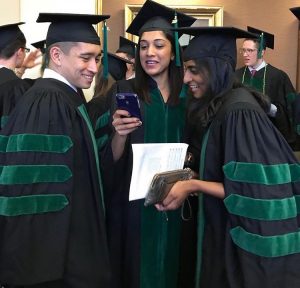 via Instagram | @umichmedschool
via Instagram | @umichmedschool
20. Intern: All residents are also known as house officers. This term is a broad term to describe someone who has completed medical school and is in training to become an attending physician. An intern is another name for a first-year resident. The first year of residency is considered the hardest due to the grueling inpatient hours, but it is also the first year that someone in medicine will finally make money! The salary for an intern usually ranges from about $50,000 to $70,000 a year, usually varying with cost of living, and increases by a few thousand dollars each year of residency. After training is over, the salary someone makes depends on a number of factors including their specialty, location and workload. Another fun thing to look forward to during intern year: Step 3. Yes there is a Step 3. Most trainees take this exam during residency in their intern year. This two-day exam covers general topics important to practicing medicine and is often used as a data point for residents applying to fellowship. For those not applying to fellowship, a passing score of 196 out of 300 is generally considered sufficient.
21. Transitional year and preliminary year: To understand what these terms mean, let’s back up a little bit. There are two types of residency programs: categorical and advanced. Categorical programs are programs in which you graduate from medical school and then go directly into a program where the intern year is related to your field of study. These programs include internal medicine, pediatrics, general surgery, obstetrics and gynecology, family medicine, emergency medicine, and more. Other programs are called advanced programs. This means that a resident doesn’t begin training in their specific field until year two. The medical specialties offering advanced programs include: radiology, ophthalmology, anesthesiology, dermatology, physical medicine & rehabilitation, and radiation oncology. This means that before year two, the resident will complete one year of training that is called a preliminary year or transitional year. Transitional year consists of a mixture of different rotations whereas a preliminary year is more concentrated in one area of study. The need to do one over the other is dependent on the residency program of choice. Medical students apply to and interview for transitional/preliminary year, as well as advanced residency programs in the same application cycle. If this whole idea is a little confusing, don’t worry about it. Just know that first-year residents are called different titles (intern, transitional year interns, preliminary year interns) based on their residency of choice.
22. PGY: PGY stands for “post graduate year.” You will see it followed by a number. If someone is a PGY-2 this means that the newly graduated doctor is in their second year of additional training after completing medical school. Let’s say a radiology resident completed her transitional year and is now a first-year radiology resident. Even though she is a first-year radiology resident (referred to as R1), she is also a PGY-2.
23. Senior resident: Just as an intern is a first-year resident, a senior resident is a resident that is in their second year or above. The responsibilities of a senior resident include patient care as well as overseeing intern residents. After completing residency, a resident may choose to stay an additional year to complete a chief year as a chief resident. Chief residents are chosen from a pool of applicants and are involved in resident education and administrative duties. In surgery, residents in their final year of residency are often called chief residents as well.
24. Fellow: After completing residency, a person may choose to do additional training to receive an additional degree of subspecialization. This training is called a fellowship. Residency = specialty, fellowship = subspecialty. Some of the common fellowships you may have heard of are cardiology, gastroenterology, and oncology. To become a cardiologist for adults, for example, a resident must complete a three-year internal medicine specialty residency first, and then complete an additional three-year cardiology subspecialty fellowship. To become a pediatric cardiologist, a resident must complete a three-year pediatrics specialty residency first, and then complete an additional three-year pediatrics cardiology subspecialty fellowship. There are many different combinations of fellowships that can be completed after residency if a resident would like to pursue a certain subspecialty further.
25. Attending: We’ve made it to the end — both of training and this extremely long article. An attending physician is a physician who is done with their training and is working independently. Attending physicians need to pass certification exams every seven to 10 years to remain board certified. Free at last!
I hope you enjoyed this glossary guide and have a little bit of a better insight into the world of medicine through the medical school lens. Feel free to share this with family, friends, and future medical students!
Rasna is a fourth year student at UMMS. She enjoys writing, community organizing, and working with children!

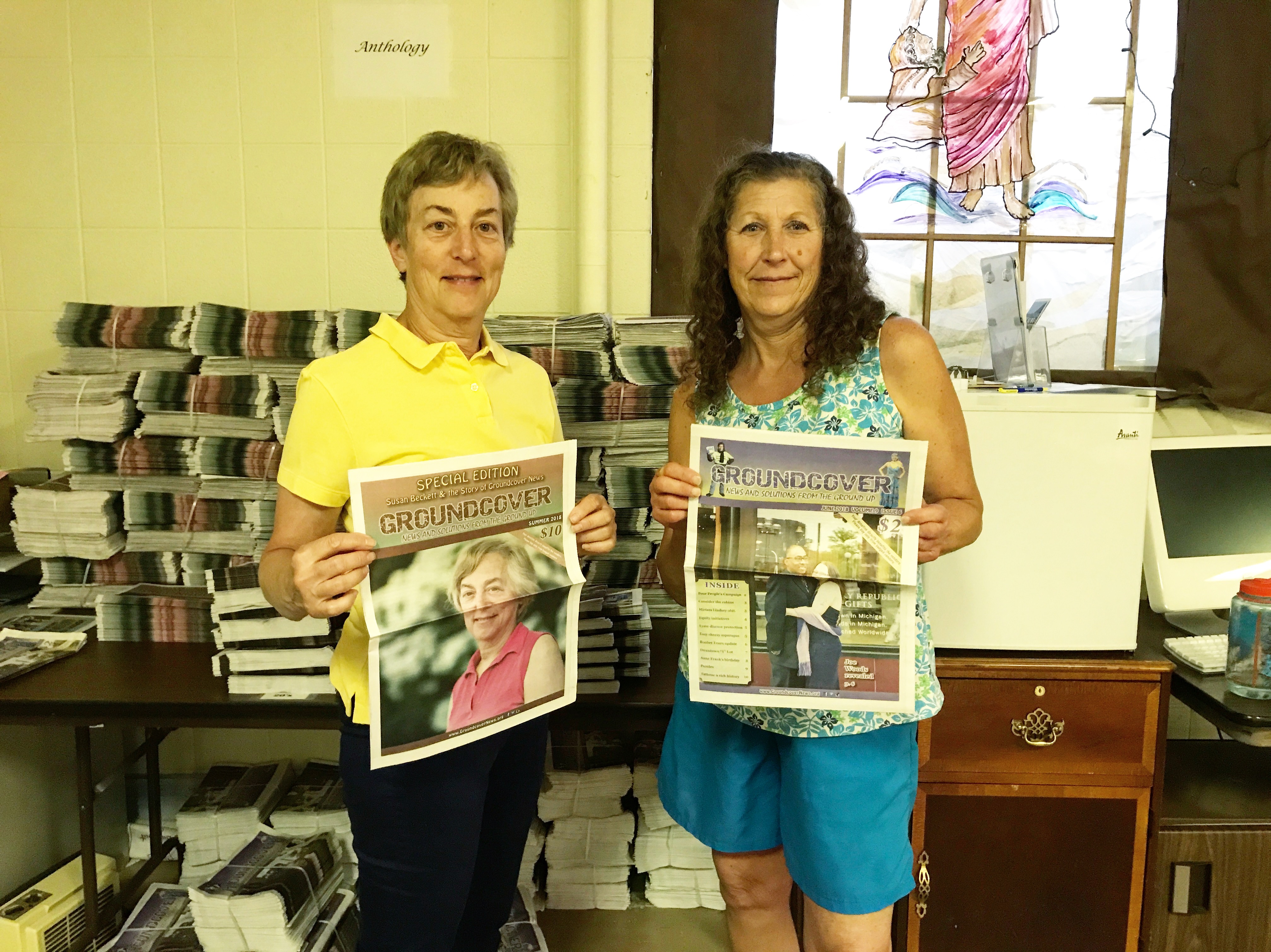 Susan Beckett (left) and Shelley Deneve (right) pose with newspapers in the Groundcover News office.
Susan Beckett (left) and Shelley Deneve (right) pose with newspapers in the Groundcover News office.![[Photo via ZingermansDeli.com]](http://www.umdoseofreality.org/wp-content/uploads/2016/12/zingermans-chicken-sandwiches-300x121.jpg)
![[Photo via FritaBatidos.com]](http://www.umdoseofreality.org/wp-content/uploads/2016/12/background_fritas-300x200.jpg)